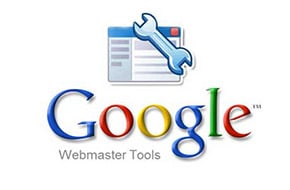
Optimize Your Videos for Search Engines
Tell Google What Your Video is About
One of the greatest ways to present tons of content in a palatable format is videos. Whether self-hosted or uploaded to YouTube, you can assist your content with visual aids and solid voice acting to inject some life that words on the page simply can’t have. But one of the problems with videos is that they don’t help with SEO, right? Well, maybe when just using the standard video embed with no additional option. But there are effective ways to associate text with your videos too, which is what Google reads when crawling your site. Explore below to see how you can make your videos irresistible to Google!
Video Titles
The video title is one of the first things your users will see when looking at your video – like the meta title on your website pages. That means Google and other search engines take it into account, too! The title is your best chance to entice your users into clicking that big play button, so it should be compelling and succinct in what benefit they’ll get from the video. For YouTube, the titles even show up like the meta description for website pages. So it’s also important to work in a high-value keyword or two, if it fits naturally into the title. For self-hosted videos, adding a title in a heading element somewhere near your video accomplishes the same thing – giving your users (and Google) a preview of the video contents.
A little tip: if you have the Yoast plugin, you can use the helper at the bottom of any WordPress editor page to check your video titles. This is a great way to get a preview of how they’ll show up in search results, and make sure they’re just the right length.
Video Descriptions
Next up comes the video description. These break from web page SEO practices, since a video description needs to be longer than the meta description. So unlike titles, you shouldn’t use the Yoast tools as a guideline for a good video description. Instead, a video description should be a more in-depth overview of the content inside the video. Since Google can’t actually watch the video, the description is the next best thing. Think of it more like if you were to create a website page based on the content in the video – what content would go on that page? Be sure to incorporate important keywords, make it flow well and read easily, and break it up into important sections.
For YouTube, there’s an easy field to add your video description. For self-hosted videos, you can write out your description into a text file, and then associate it with your embedded video using the track tag.
However – don’t just transcribe your video into the description. There’s a time and place for that coming up next. But putting the video script in the description will make it read just like that: a script. Scripts are much better performed than simply read, and a video allows you to do that and add flair where text cannot.
Manual Transcripts
Manually adding a video transcript or closed captions to your video is a great way to load in some extra content. Since the description will generally be read by a chunk of the video viewers, you don’t want it to be a straight transcription of the video. But a transcription has the chance to explore topics in more detail that you don’t want to put in the description. Plus, it’s just more content for Google and other search engines to have about the video.
For self-hosted videos, you’ll do this like the description above, using a different track tag with the “captions” type. Be careful not to use “subtitles”, which are instead for different languages or content that’s written on the screen but not spoken. For YouTube, the service provider will auto-transcribe your video, but it’s generally best to not use these and enter a manual transcription. YouTube’s automated program doesn’t have a great accuracy rate, and can wind up associating your video with mistakes ranging from nonsensical to offensive. Both do nothing to help your SEO.
This is done through the “Subtitles” section of YouTube’s video studio. (Yes, that’s different than the self-hosted captions option, but what can you do?) You’ll want your native language at least, and any other languages you feel comfortable adding certainly won’t hurt.
Video Thumbnails
This topic is more of an art than a science, but thumbnails do play a role in search engine optimization. Namely, the more interesting and compelling a thumbnail, the more likely a user is to click the video. And the more video clicks a video has, the more likely Google is to pick up on that and rank your video higher. Google itself doesn’t look at the image and make a judgment, since it doesn’t have eyes. But it does track patterns and engagement, which a well-craft thumbnail helps with.
Generally, we recommend choosing a thumbnail with somebody’s face visible. Seeing a person in the thumbnail helps users connect and provides some validation that there’s a real person behind the content. If you’re not comfortable showing your face or just don’t have a good image to show, then an interesting and compelling visual image is the next recommendation. This will be different for every site and brand, of course, but try to set a thumbnail that works with your title to entice your users and draw them in.
Video Tags
Our last topic is for YouTube only, but you can essentially tell the platform what keywords are relevant to your video with tags. Like every other step along the way, search engines will check this as much as they can through provided content and patterns, so it’s best not to make any stretches when setting tags. But done accurately, this can give Google a little push in helping it index your video.
Need help with video SEO, or with optimizing your website in general? Don’t hesitate to reach out to us at Mr. WPress for a free quote to see how we can help!



